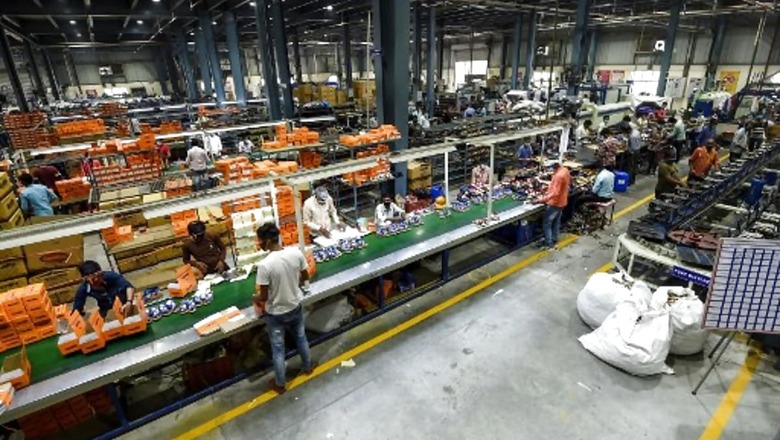
views
The Indian economy continues to contract although the pace of contraction has slowed. The GDP growth in Q2 (July-September) was -7.5% against -23.9% degrowth in the June quarter, bringing all-round cheer. But this cheer needs to be tempered with caution. The government has already asserted that the Q2 data point to a V-shaped recovery. Will it hold?
For one, the Indian economy is now back to the December 2017 level, which means we have shrunk to the level seen nearly three years ago. Two, a better comparison would have been the September quarter of the last fiscal year, when the economy was still growing at 4.4%. Three, the GDP data for the June and September quarters this year are based only on initial estimates based on economic activity in primarily the organised sector. Data for the vast unorganised sector would come in with a lag and it is entirely possible the economy has contracted more than is evident for Q2 with current data.
And four, the first six months of the ongoing fiscal year still show double digit (-15.7%) economic contraction, pushing India into a recession. The fallout of a recession could be long lasting and debilitating. Also, we could still close this fiscal year with a nearly double-digit decline in growth.
Q2 GDP at –7.5% buttresses recovery as captured by several high frequency indicators. Economic impact is primarily due to #COVID19, good news is falling daily cases are due to lower transmission & not due to lower testing. To sustain economic recovery, caution must continue.(1/7) pic.twitter.com/u0bLxTEztU— Ministry of Finance (@FinMinIndia) November 27, 2020
In a series of tweets, the Finance Ministry asserted that a broad-based economic recovery was underway and that daily cases of Covid-19 infection were falling. It said the Q2 GDP of –7.5% “buttresses recovery as captured by several high frequency indicators. Economic impact is primarily due to #COVID19, good news is falling daily cases are due to lower transmission and not due to lower testing. To sustain economic recovery, caution must continue”.
The ministry termed this economic recovery “V-shaped” and said it was coming from use-based industries, especially in consumer goods and consumer durables. It also pointed to investment, especially in capital and infrastructure goods, to say there was a strong revival of both, consumption and investment, which together account for about 90% of India’s GDP.
But analysts at brokerage firm Edelweiss said the sharp bounce-back in the economy in Q2 reflects unlocking/pent-up effect along with a low base and was largely led by industry even as services/consumption continued to lag. Put simply, the robust sale of cars was at least partly due to demand, which had been there since before the lockdown and also due to festivities beginning September. The industry sector posted -2% growth versus a whopping -38% number for the June quarter but services shrank by 11% against 21% in the preceding quarter. This points to revival in industrial activity but no significant improvement in services.
“The first estimate of GDP may exaggerate the bounce as it covers mainly large/organised businesses, which gained market share. Besides, the negative effect of cost control by larger players on downstream smaller businesses may not be fully captured yet,” these analysts said.
The first-round or initial estimates of GDP are based on data from listed companies’ performance – which have gained market share during covid-19 and have rationalised costs (rents, marketing expense, etc.). At the same time, the revenues of smaller, downstream companies have been impacted negatively. Hence, the positive impact of cost rationalisation is captured in the first set of data, but perhaps not fully its side effects. While the improvement is welcome, the bounce could be a bit exaggerated and the true picture would only emerge in subsequent revisions of the data. Already, sales of discretionary products have declined in the last few weeks despite a continued festival period.
An analyst at brokerage UBS pointed out that the Indian economy may have lost close to Rs 20 lakh crore or 10.6% of its GDP between April and September due to mobility restrictions. And that the service sector activity continues to show a lag. “The UBS-Financial Conditions Indicator has plateaued in November after a swift recovery in the September quarter. We continue to expect India’s real GDP to contract 10.5% in FY21,” the brokerage said earlier this week.
The key to a comprehensive economic revival, in an economy which is now officially in a recession, would be more discretionary spending by the ‘aam aadmi’ and much more robust job creation. UBS has estimated that just a third of India’s labour force would have seen income continuity during the lockdown. “The rest were either self-employed or work as casual labourers, their incomes have been significantly affected due to the mobility restrictions amidst the COVID-19 shock and only a modest government response to support the labour market.”
How has India fared when compared to other major world economies since the pandemic arrived? An analysis by CARE Ratings shows that for the June quarter as well as the September quarter, India has been a laggard. All major economies reported narrower contraction in the June quarter compared to India while only two have contracted more than India in Q2 – UK and Spain. The CARE analysts have said that while GDP contraction is expected to reduce in the remaining two quarters of 2020-21, the economy continues to face downward pressures from the sustained spread of the pandemic and the re-imposition of restrictions in various regions.
“Consumption demand and investments, necessary to propel the economy, would continue to be tepid and are unlikely to seen a noteworthy improvement during the course of the year. We expect the country’s GDP to contract by -7.7% to -7.9% in FY21,” these analysts said.
Read all the Latest News, Breaking News and Coronavirus News here




















Comments
0 comment